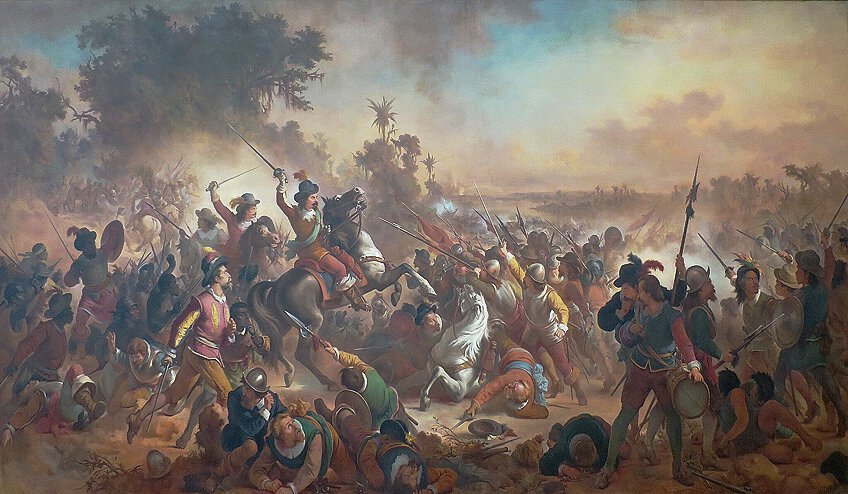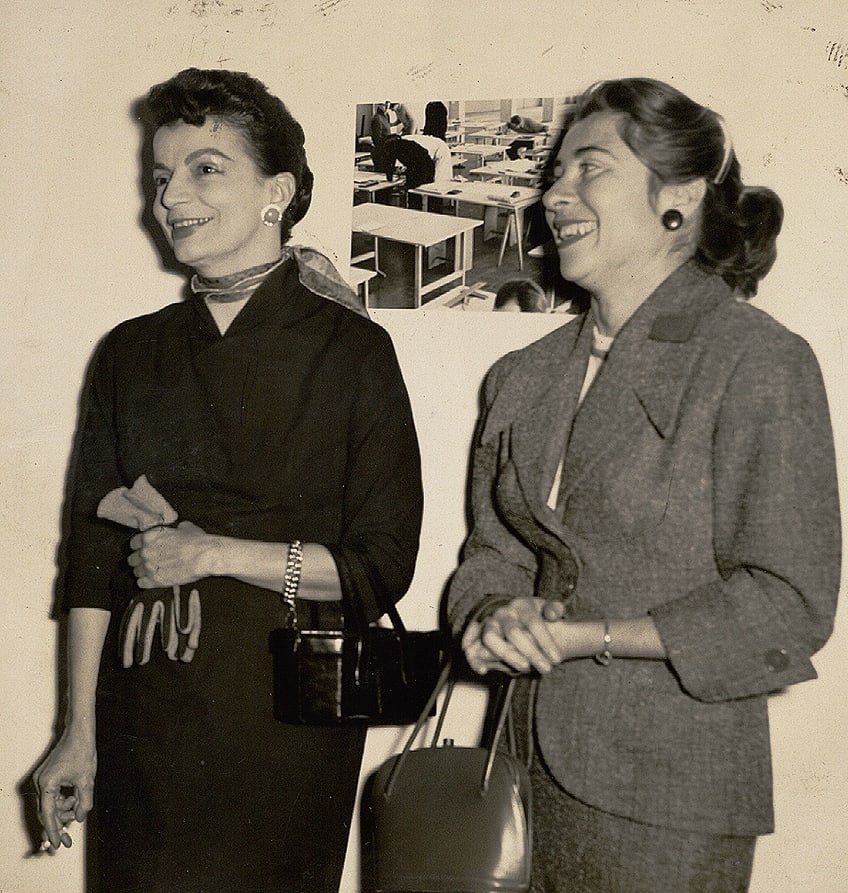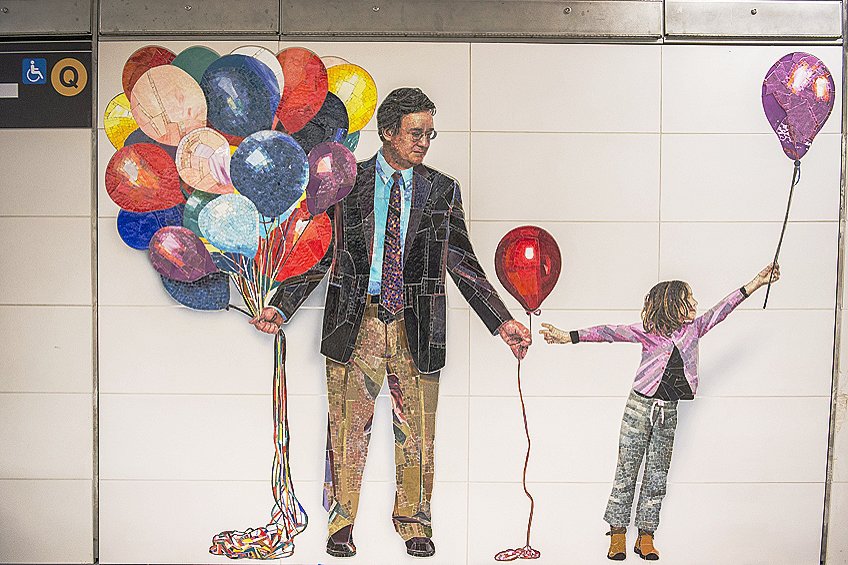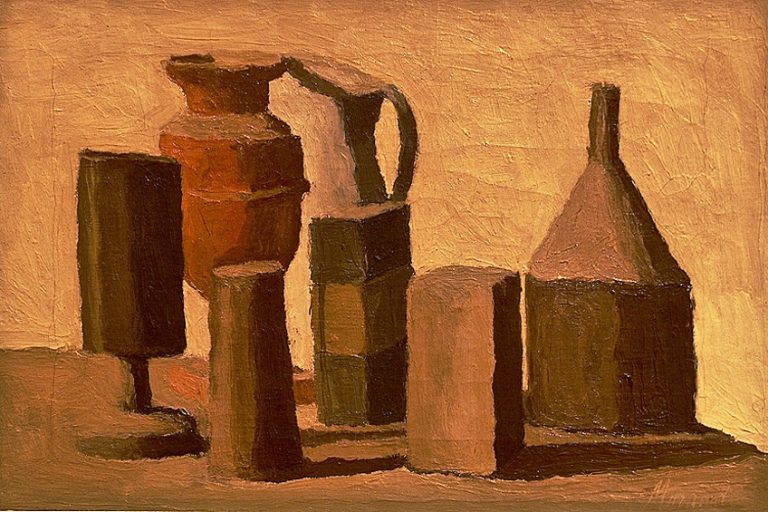Brazilian Artists – From the Amazon to Avant-Garde
Brazil has a rich and vibrant artistic heritage, with a multitude of talented artists spanning various genres and styles. From the iconic modernist works of Tarsila do Amaral to the mesmerizing abstract compositions of Lygia Clark, Brazilian art has captivated audiences worldwide. This article delves into the lives and creations of some of Brazil’s top artists, exploring their unique contributions to the country’s cultural tapestry and their enduring impact on the global art scene.
The History of Art from Brazil
Art from Brazil reflects a fascinating blend of cultural influences, historical narratives, and innovative approaches. Brazilian art encompasses a wide range of styles and themes, from the vibrant and colorful folk art traditions of northeastern Brazil to the avant-garde experiments of modernist artists like Tarsila do Amaral. The country’s art scene has also been shaped by movements such as Concrete Art and Tropicalism, which have contributed to a rich tapestry of artistic expression.

Contemporary Brazilian artists continue to push boundaries and explore new frontiers in art, addressing pressing social issues, cultural identities, and global trends. Through various mediums including painting, sculpture, installation, and multimedia, these artists engage with themes of diversity, environmental concerns, urbanization, and human rights, showcasing the dynamic and evolving nature of Brazilian art on the global stage.
10 Brazilian Artists to Know
In this section, we delve into the lives and works of 10 exceptional Brazilian artists who have made significant contributions to the country’s rich artistic heritage. From pioneers of Brazilian modernism to contemporary innovators pushing the boundaries of artistic expression, these artists represent a diverse range of styles, themes, and influences that showcase the depth and dynamism of Brazil’s art scene.
Each artist’s unique journey, from the historical context that shaped their careers to the notable artworks that define their legacy, offers a fascinating glimpse into the vibrant and evolving landscape of Brazilian art.
Aleijadinho (1730 – 1814)
| Birth | 1730 |
| Death | 1814 |
| Place of Birth | Vila Rica (now Ouro Preto), Brazil |
| Genre of Work | Baroque sculpture and architecture |
Aleijadinho, whose real name was Antônio Francisco Lisboa, was a highly influential sculptor and architect during the Brazilian colonial period. Born in Minas Gerais, Brazil, Aleijadinho’s career flourished despite suffering from a degenerative disease that caused the loss of his fingers and toes, leading to his nickname, “the little cripple.” His works are characterized by intricate Baroque details and religious themes, with notable pieces including the sculptural ensemble at the Sanctuary of Bom Jesus de Matosinhos in Congonhas.
Aleijadinho’s legacy extends beyond his artistry, as he played a significant role in shaping the cultural identity of Brazil during the 18th century.

Victor Meirelles (1832 – 1903)
| Birth | 1832 |
| Death | 1903 |
| Place of Birth | Florianópolis, Brazil |
| Genre of Work | History painting and Romanticism |
Victor Meirelles was a prominent Brazilian painter known for his historical and academic artworks. Born in Santa Catarina, Brazil, Meirelles studied at the Imperial Academy of Fine Arts in Rio de Janeiro and later traveled to Europe, where he further honed his skills. His career reached its pinnacle with paintings like The First Mass in Brazil and The Battle of Guararapes, which depicted key moments in Brazilian history with a meticulous attention to detail and a grandiose style typical of academic art. Meirelles’s contributions to Brazilian art earned him recognition both at home and abroad, solidifying his position as one of Brazil’s most celebrated artists.

Tarsila do Amaral (1886 – 1973)
| Birth | 1886 |
| Death | 1973 |
| Place of Birth | Capivari, Brazil |
| Genre of Work | Modernism and Brazilian art |
Tarsila do Amaral was a leading figure in Brazilian modernism and a key member of the Anthropophagic Movement. Born in São Paulo, Brazil, Tarsila’s career was marked by her bold and colorful style, influenced by Cubism and Brazilian folk art. Her iconic painting Abaporu is considered one of the most important works in Brazilian art history, symbolizing a synthesis of indigenous and European artistic elements.
Tarsila’s explorations of national identity, combined with her innovative artistic approach, had a profound impact on the development of modern art in Brazil, inspiring future generations of artists.

Candido Portinari (1903 – 1962)
| Birth | 1903 |
| Death | 1962 |
| Place of Birth | Brodowski, São Paulo, Brazil |
| Genre of Work | Social Realism and Modernism |
Candido Portinari was a prolific Brazilian painter known for his socially conscious artworks that depicted the struggles and beauty of everyday life. Born in São Paulo, Brazil, Portinari’s early exposure to rural life and labor issues influenced his artistic themes. His masterpiece series War and Peace, commissioned by the United Nations, showcased his humanitarian concerns and artistic prowess on a global stage. Despite facing political persecution during his career, Portinari’s legacy endures through his powerful imagery and dedication to depicting the human condition with honesty and empathy.

Lygia Clark (1920 – 1988)
| Birth | 1920 |
| Death | 1988 |
| Place of Birth | Belo Horizonte, Brazil |
| Genre of Work | Abstract art and Neo-Concretism |
Lygia Clark was a pioneering Brazilian artist known for her contributions to Neo-Concrete art and participatory artworks. Born in Minas Gerais, Brazil, Clark’s career evolved from geometric abstraction to immersive experiences that engaged viewers physically and emotionally. Her Bichos series, interactive sculptures with movable parts, challenged traditional notions of sculpture and spectatorship.
Clark’s innovative approach to art, combined with her interest in psychology and human behavior, made her a leading figure in the Brazilian avant-garde and a trailblazer in contemporary art worldwide.

Hélio Oiticica (1937 – 1980)
| Birth | 1937 |
| Death | 1980 |
| Place of Birth | Rio de Janeiro, Brazil |
| Genre of Work | Conceptual art and Neo-Concretism |
Hélio Oiticica was a pioneering Brazilian artist known for his contributions to the Neo-Concrete movement and innovative installations. Born in Rio de Janeiro, Brazil, Oiticica’s career began with geometric abstract paintings but quickly evolved into immersive environments that invited viewer participation. His Parangolés, wearable sculptures made of vibrant fabrics, embodied his belief in art as a lived experience. Oiticica’s exploration of color, space, and the sensorial nature of art made him a seminal figure in Brazilian and international avant-garde art.

Beatriz Milhazes (Born 1960)
| Birth | 1960 |
| Death | Present |
| Place of Birth | Rio de Janeiro, Brazil |
| Genre of Work | Contemporary art, Abstract art, and Brazilian Modernism |
Beatriz Milhazes is a contemporary Brazilian artist renowned for her vibrant and intricate compositions that blend elements of modernist abstraction and Brazilian folk art. Born in Rio de Janeiro, Brazil, Milhazes’s career gained prominence with her use of bold colors, organic shapes, and rhythmic patterns in paintings, prints, and installations. Her artworks often explore themes of cultural identity, femininity, and the visual richness of Brazilian culture.
Milhazes’s distinctive style and artistic vision have earned her international acclaim and recognition as one of Brazil’s leading contemporary artists.

Vik Muniz (Born 1961)
| Birth | 1961 |
| Death | Present |
| Place of Birth | São Paulo, Brazil |
| Genre of Work | Contemporary art, photography, and Conceptual art |
Vik Muniz is a Brazilian artist known for his innovative use of unconventional materials and his conceptual approach to art-making. Born in São Paulo, Brazil, Muniz’s career includes a wide range of works, from intricate drawings and paintings to large-scale installations and photography. His notable series, Pictures of Garbage, transformed trash into intricate images when viewed from a distance, highlighting themes of consumption, waste, and perception. Muniz’s art challenges traditional notions of materiality and representation, pushing the boundaries of artistic expression.

Adriana Varejão (Born 1964)
| Birth | 1964 |
| Death | Present |
| Place of Birth | Rio de Janeiro, Brazil |
| Genre of Work | Contemporary art, Installation art, and painting |
Adriana Varejão is a contemporary Brazilian artist recognized for her provocative explorations of cultural hybridity, colonialism, and the body. Born in Rio de Janeiro, Brazil, Varejão’s career encompasses paintings, sculptures, and installations that often reference Brazil’s colonial history and cultural diversity. Her series, Tiles, reinterprets traditional Portuguese azulejos with a contemporary twist, exploring themes of identity and cultural exchange.
Varejão’s thought-provoking artworks challenge viewers to reconsider historical narratives and the complexities of cultural identity in Brazil.

Ernesto Neto (Born 1964)
| Birth | 1964 |
| Death | Present |
| Place of Birth | Rio de Janeiro, Brazil |
| Genre of Work | Contemporary art, Installation art, and sculpture |
Ernesto Neto is a Brazilian artist known for his immersive installations that engage viewers through sensory experiences. Born in Rio de Janeiro, Brazil, Neto’s career began with sculptures and installations influenced by Minimalism and Neo-Concrete art. His later works, such as Navedenga and Leviathan Thot, incorporate stretchy fabrics, spices, and scents, creating organic, womb-like environments for viewers to explore. Neto’s art blurs the boundaries between art and architecture, inviting audiences to interact with space, touch, and the senses, making him a significant figure in contemporary Brazilian art.

As we conclude our exploration of Brazil’s top artists, it’s clear that their collective brilliance transcends borders and time. From the groundbreaking expressions of Candido Portinari to the innovative visions of Helio Oiticica, these artists have not only shaped Brazil’s artistic landscape but have also left an indelible mark on the international art world. Their diverse perspectives, ranging from social commentary to abstract experimentation, showcase the depth and dynamism of Brazilian art. As we celebrate their legacies, we are reminded of the enduring power of art to inspire, provoke thought, and bridge cultural divides.
Frequently Asked Questions
What Are Some Key Movements in Brazilian Art History?
Brazilian art history includes several key movements such as Baroque art during the colonial period, modernism with artists like Tarsila do Amaral, Neo-Concrete art with Hélio Oiticica, and contemporary art movements exploring themes of cultural identity, social issues, and environmental concerns.
What Themes Do Brazilian Artists Often Explore in Their Artworks?
Brazilian artists often explore a wide range of themes, including cultural identity, social inequality, environmental sustainability, historical narratives, and the fusion of indigenous and European influences. These themes reflect the diverse and complex realities of Brazilian society and history.
How Has Brazilian Art Influenced the Global Art Scene?
Brazilian art has had a significant impact on the global art scene through its innovative approaches, unique perspectives, and cultural richness. Artists like Tarsila do Amaral, Candido Portinari, and Ernesto Neto have garnered international acclaim, contributing to the visibility and recognition of Brazilian art worldwide.
Isabella studied at the University of Cape Town in South Africa and graduated with a Bachelor of Arts majoring in English Literature & Language and Psychology. Throughout her undergraduate years, she took Art History as an additional subject and absolutely loved it. Building on from her art history knowledge that began in high school, art has always been a particular area of fascination for her. From learning about artworks previously unknown to her, or sharpening her existing understanding of specific works, the ability to continue learning within this interesting sphere excites her greatly.
Her focal points of interest in art history encompass profiling specific artists and art movements, as it is these areas where she is able to really dig deep into the rich narrative of the art world. Additionally, she particularly enjoys exploring the different artistic styles of the 20th century, as well as the important impact that female artists have had on the development of art history.
Learn more about Isabella Meyer and the Art in Context Team.
Cite this Article
Isabella, Meyer, “Brazilian Artists – From the Amazon to Avant-Garde.” Art in Context. March 28, 2024. URL: https://artincontext.org/brazilian-artists/
Meyer, I. (2024, 28 March). Brazilian Artists – From the Amazon to Avant-Garde. Art in Context. https://artincontext.org/brazilian-artists/
Meyer, Isabella. “Brazilian Artists – From the Amazon to Avant-Garde.” Art in Context, March 28, 2024. https://artincontext.org/brazilian-artists/.











